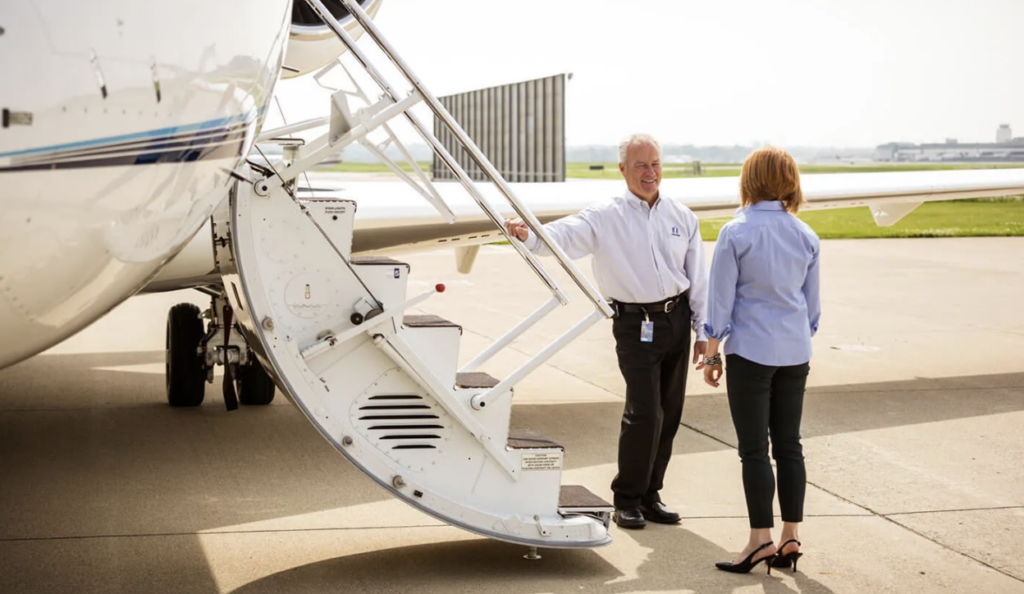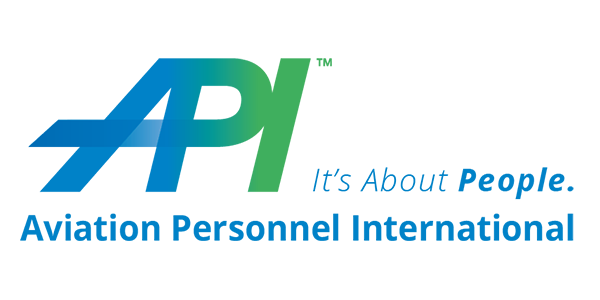
Read original NBAA article regarding retiring commercial airline pilots.
Business aviation can offer a welcome and lucrative option for pilots who want to keep flying after retiring from, or otherwise exiting, the commercial airlines. However, they may run into unexpected challenges if they aren’t fully prepared for that transition.
David Keys, chief pilot of Peace River Citrus Products and vice chair of the NBAA Flight Operations Committee, said he found “a completely different world” when he first moved from a now-defunct commercial carrier in the 1980s to flying for a Part 91 flight operation.
“Business aviation is more about relationships than the mechanics of the job,” he said. “It’s about customer service; you will load luggage and ask your passengers if they’d like drinks. You will clean up after them. It’s a lot more involved than merely showing up and flying the airplane.”
“Your support network isn’t very large at all compared to an airline,” added Lisa Archibald, CAM, and a commercial airline first officer who’s also worked in business aviation. “In fact, it may just be you!”
Like Keys, Archibald’s past duties ranged from lining up catering to arranging fuel loads, international permits and ground handlers. “I worked for some well-established business aircraft operators, and I’d say 90% of a successful trip was thanks to the pilots,” she added. “Our little team made it all happen.”
Pilots moving over to business aviation may also run into procedural and technological challenges. “There’s a lot more technology available to business aviation pilots,” Keys said, “and we need it. We don’t have the support network behind us that we did at the airlines.”
Those differences often become known during training. “You don’t want to stick out in ground school by saying, ‘that’s not how we did it at the airlines,’” Keys said. “If you keep comparing it to what you used to fly, you will struggle.”
Hands-On Work
Jay Johnston flew for nearly 25 years with a commercial airline before mandatory retirement. He moved three years ago to a Part 91 operator based in the northern U.S.
“Business aviation is a lot more hands-on, and of course you need to keep your primary happy,” Johnston said. “If he decides to stay an extra day somewhere, it’s ‘yes sir’ followed by what can be a lot of rearranging your personal schedule on the back end.”
Prior to retirement, Johnston consulted with a 20-year industry veteran. “I knew a lot going in about what to expect,” he said. “Some of that I learned from my friend, and some was from simply envisioning the operation and thinking about what would be required.”
Johnston found that business aviation offered several upsides. “First and foremost, the owners are great people,” he said. “That’s a big factor when flying Part 91; you get to know them, you’re traveling to the same fun places they go to and you’re usually staying at or near the same hotel.
“You’re in the neighborhood of their lifestyle,” Johnston continued. “We can select our hotels that are usually much nicer than airline accommodations and optimize [rewards] points for hotels and rental cars.”
Archibald agreed. “Business aviation crews are often very well taken care of. Nice hotels, nice meals and perks that can be much better than airlines offer.”
Like Archibald, Johnston had to get used to performing his own flight planning and monitoring his flight hours to stay ahead of training requirements.
“The airline tracks your hours and currency, and advises when you’re due for training,” Johnston said. “In this world, the chief pilot may call me and say I need to take an online international flying course and it’s up to me to select the provider and ensure I’m current.”
With that greater responsibility also comes what Johnston termed a sizable pay disparity. “That’s really the only thing I’d change,” he said. “The airline did pay me a lot more, but this is the job that keeps me flying and I’ve met some fantastic people.”
Building Relationships
Keys and Archibald agreed the ability to develop those personal relationships is a definite advantage in making the move to business aviation.
“The airlines were a lot different when I first started flying,” Keys said. “Back in the 1980s we could interact a lot more with the flight attendants and ground crews. Now, we just lock ourselves behind the cockpit door.
“Business aviation is a lot more fun,” he continued. “Had I stayed with the airlines, I’d not have near the number of friends I have in business aviation today.”
“It’s nice to get to know someone and make that connection, especially in retirement,” Archibald agreed. “You never know where you might be able to help someone, or someone may help you.”
Archibald also noted that the nature of business aviation flying appeals to many pilots. “Type A people enjoy new challenges, and each flight can offer a puzzle or two that requires solving,” she said. “That can be so much fun!”
“I just fell in love with business aviation,” Keys added. “Sure, it’s not glamorous to carry bags or empty the lavatory, but it is fulfilling work. You don’t simply check in and check out; you are contributing to all aspects of the operation.”
“We all play a role outside the flight deck,” Archibald agreed. “It may be small – scheduling pilot training, managing an EFB subscription – but in business aviation, those roles must usually be completed by the pilot.
“I love being involved, so I’m involved outside the flight deck [at the airline] but that is my choice,” she continued. “It is not a choice in business aviation.”
Overcoming Misperceptions on Both Sides
Those making the move to business aviation from commercial airline flying may discover some flight operations are reluctant to consider them for the job. Jennifer Pickerel, vice president at Aviation Personnel International, offered several tips to overcome that challenge.
“There are misperceptions on both sides of the hiring desk,” she said. “Flight departments believe airline pilots lack the customer service skills necessary in our industry – and those are not easily taught – and some airline pilots expect business aviation flying to be easier.
“It’s generally not enough to simply say, ‘I’m retiring but not ready to stop flying,” Pickerel continued. “You need the desire to work in the business aviation environment and be receptive to what that requires. You must contribute to the operation beyond the flight deck.”
As a result, Pickerel noted, some clients will not consider applicants from the commercial airlines unless they also have previous experience in business aviation.
“That said, I encourage them to lean into that stigma,” she added. “Demonstrate respect for what the job requires and do your research. State upfront that you don’t want to be part of that stigma, but you acknowledge that it exists.”
An effective cover letter can also help convince a recruiter to take a closer look at your application. “Make it compelling and show your personality,” Pickerel said. “Show them you’ve done your research. Sell yourself enthusiastically and leave them wanting to learn more.
“It’s true that you will have a higher bar to clear,” she concluded. “Just because we’re in the same industry doesn’t mean the requirements are the same. Business aviation is a far more delicate dynamic, but you can acknowledge those differences and celebrate them.”
